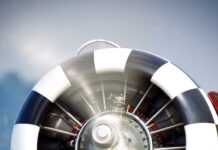During the pilot safety debrief at the 2000 ICAS Convention in Las Vegas, ICAS member and air show legend Bob Hoover was asked to make a single observation about air show accidents that others in the room might learn from. He said, “We’re not coming up with new ways to kill ourselves. We’re repeating the same mistakes over and over.”
Even a cursory review of air show accidents during the last two decades supports Hoover’s observation. And, as the 2012 air show season gets underway, it is instructive for air show pilots to familiarize themselves with these past accidents.
For example, four different accidents during the last fifteen years resulted from two performers losing sight of one another and suffering a mid-air collision. No performance sequence should include a maneuver in which visual contact is deliberately lost and then reacquired. Anytime two pilots fly together, they should have a previously agreed upon procedure should they inadvertently lose sight of one another. These are truisms in aviation. But, from time to time, performers decide to try and beat the odds. Sonny Lovelace, Randy Drake, Montaine Mallet, Daniel Heligoin, Bobby Younkin and Jimmy Franklin are among the most experienced and talented pilots ever to perform at air shows. In several cases, they had performed that particular maneuver hundreds of times without incident. But, for all six, the odds eventually caught up with them. Do you want to take that same chance?
Similarly, botched reverse half Cuban eights and Split S maneuvers have been the culprit in nearly a dozen air show fatalities during the last 20 years. Newbies and veterans, military and civilian, these pilots have repeated the mistakes of their colleagues with tragic consequences. The trend would seem to suggest that everybody flying these maneuvers should develop some kind of habitual check-off to ensure sufficient altitude at the top of a maneuver before initiating the pull, but, sadly, experience tells us that some won’t and will eventually be killed by this same maneuver.
Another maneuver that has killed a disturbingly large number of pilots is low-level aileron rolls. Both in North America and Europe, this usually benign maneuver has resulted in fatal accidents when the pilot performed the rolls badly and at such a low altitude that there was no room for even a small mistake. Many, perhaps most, pilots will react to this by telling themselves that they simply won’t perform poor rolls, so being very low won’t make a difference. Might it make more sense to simply add a little altitude before starting those aileron rolls?
Although not always a causal factor in an accident, smoke oil pumps that have continued to pump oil after a crash have complicated already dangerous situations on several occasions. There now exist several inexpensive, easily installed automatic pump shut-off switches, but only a few pilots have taken the time to install these potentially lifesaving devices, perhaps convincing themselves that they won’t have an accident and, if by some chance they do, they will remember to turn off the smoke oil pump.
In the last several years, several pilots have been killed when gyroscopic maneuvers have unexpectedly degenerated into flat spins at altitudes where the pilots did not have sufficient room to safely recover. Might it make sense to build in some additional altitude before initiating that tumble?
And high density altitude conditions have claimed the lives of at least six air show pilots during the last several years. Even the most experienced pilots set aside an extra day or two to acclimatize if they know they are heading into high DA conditions. If you happen to find yourself in that situation this year, we encourage you to do the same thing.
Under the best of circumstances, the air show environment is dangerous and unforgiving. But it becomes even more dangerous than it needs to be when we don’t learn from the fatal mistakes of our deceased colleagues. So, as you finalize your preparation for this year’s air show season, take some time to familiarize yourself with those accidents. It may save your life.








